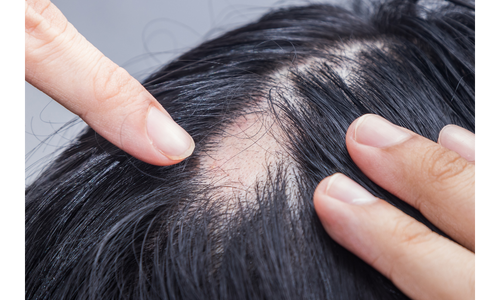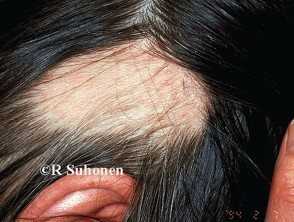
Alopecia hair; It means spilling. It is a round or oval-shaped, patchy loss of scalp, eyebrows, eyelashes, beard, mustache or body hair in a person without any change in the skin.
Why does alopecia areata occur?
Alopecia areata; It is an autoimmune disease (in which a person's own defense cells see the cells in his body as foreign and attack them). Here, alopecia areata develops when the defense cells attack the person's own hair follicles.
How many? Is there any type?
The disease is divided into 4 categories
1st type: 83% of the patients have symptoms. creates. 20-40 years of age, attacks last less than 6 months and resolve spontaneously. 6% of all hairs may be affected
Type 2: Childhood period begins. 10% have atopic dermatitis. The duration of the disease may last 10 years or more. Plaques may last longer than 1 year. 75% of alopecia may turn into totalis.
3rd type: 4% of patients may develop alopecia. creates. Youngç It occurs in adults, progresses rapidly, and 39% of alopecia may turn into totalis.
Type 4: 5% of patients. Startç age is after 40 years of age. Attacks last for years. 10% of alopecia may turn into totalis.
Is alopecia areata contagious?
Alopecia Areata is not contagious.
Is there a genetic transmission of alopecia areata?
In genetically predisposed people, the disease occurs due to certain triggering factors.
Can alopecia areata occur with other diseases?
The risk of alopecia areata is higher in those with thyroid disease, vitiligo (ala) disease, atopic eczema and those with a family history of asthma, diabetes and allergic diseases:
How is alopecia areata diagnosed?
Diagnosis is made by dermoscopic examination or rarely by skin biopsy, apart from dermatological examination.
What are the symptoms of alopecia areata?
- One or more coin-sized, round, smooth-surfaced hair growths in areas where hair was previously present. Patch-shaped hair with no other changes other than hair loss. It appears as hair loss.
- It is the place where hairs fall out. The hairs in the area or on the edge appear narrower where they emerge from the skin and resemble an exclamation mark.
- Over time, some patients may lose their hair completely. For this reason, patients with alopecia areata should be followed up at times requested by their dermatologist in the first year.
- In some patients, fingernails and toenails may also develop small pin-like indentations (crown nails). It can be seen. Additionally, white spots, fine lines, loss of shine and breakage may occur. Rarely, nail deformities may occur.
How is alopecia areata treated?
- There is no complete treatment for alopecia areata. Hairs can usually regrow spontaneously within a year. Treatment may help the hair grow back faster.
- The treatment involves patchy hair. The spilled area may be recommended for local injection, steroid cream or lotion, and in common cases, oral steroid tablets or dithranol cream. One or more of these drugs can be used together.
- Ask your dermatologist about the side effects that may occur due to the drugs. Consult your dermatologist as soon as possible about any reactions that occur during your treatment.
When does the disease pass?
The majority of patients recover completely within a year. However, some patients may not respond to treatment. In some, healing and re-shedding may continue.



